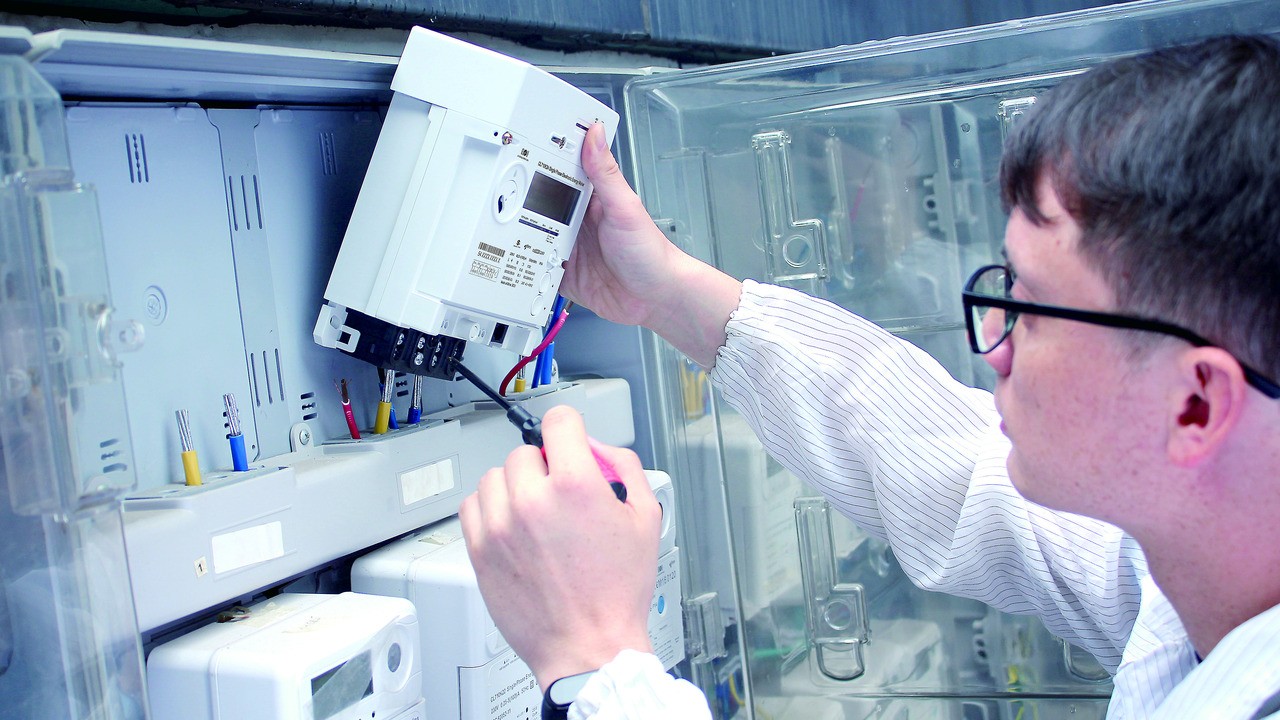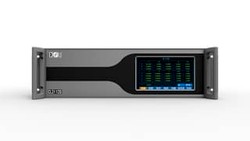Smart meters have transformed the energy industry, providing consumers with advanced functionalities and empowering them to make informed decisions about their energy usage. One such feature is Time-of-Use (TOU) pricing, which offers varying electricity rates based on the time of day. In this article, we will explore the intricacies of TOU pricing and how it promotes efficient energy consumption, reduces peak demand, and supports a sustainable energy future.
Understanding Time-of-Use (TOU) Pricing
Time-of-Use (TOU) pricing is a dynamic electricity rate structure that aims to reflect the varying cost of electricity production throughout the day. Unlike traditional flat-rate pricing, TOU pricing divides the day into different periods, each with its own corresponding rates. These periods are typically categorized as peak, off-peak, and shoulder.
- Peak Period
The peak period is characterized by high electricity demand, usually occurring during the daytime when businesses and households are most active. Due to the increased strain on the grid during this time, electricity rates are set at their highest levels. This encourages consumers to shift their energy-intensive activities to off-peak periods, reducing the pressure on the grid and optimizing energy usage. - Off-Peak Period
The off-peak period refers to times of lower energy demand, typically occurring during late evenings, nights, and early mornings. Electricity rates during this period are lower, incentivizing consumers to use energy-intensive appliances or charge electric vehicles during these hours. By utilizing off-peak periods, consumers can take advantage of reduced rates and lower their overall electricity costs. - Shoulder Period
The shoulder period sits between the peak and off-peak periods and represents a transitional phase. Electricity rates during this period are usually higher than off-peak rates but lower than peak rates. The purpose of the shoulder period is to incentivize a moderate shift in energy consumption, encouraging consumers to avoid the peak period while still benefiting from lower rates.
It's important to note that the specific timings and durations of these periods may vary depending on the utility and region. Utilities typically determine the TOU pricing structure based on factors such as energy demand patterns, grid capacity, and the cost of electricity production during different times of the day.

(image credit CLOU)
The Benefits of TOU Pricing
Time-of-Use (TOU) pricing offers several benefits that empower consumers and contribute to a more efficient and sustainable energy landscape:
- Consumer Empowerment
TOU pricing empowers consumers to take control of their energy usage and make informed decisions about when and how they consume electricity. By understanding the rate structure and the specific time periods, consumers can strategically plan their energy-intensive activities and optimize their energy consumption. This level of control enables them to align their energy usage with their specific needs and lifestyles, ultimately resulting in cost savings and increased satisfaction. - Cost Savings
One of the primary advantages of TOU pricing is the potential for cost savings. By shifting energy consumption to off-peak periods when rates are typically lower, consumers can reduce their overall electricity bills. This creates an incentive for consumers to use energy-intensive appliances, such as washing machines or dishwashers, during off-peak hours. Additionally, consumers can charge electric vehicles or run other energy-demanding activities during off-peak periods to take advantage of the lower rates, further reducing their expenses. - Grid Stability
TOU pricing plays a crucial role in maintaining grid stability. During peak periods, when energy demand is at its highest, the grid can experience strain, potentially leading to power outages or disruptions. By incentivizing energy consumption during off-peak periods, TOU pricing helps reduce peak demand and smoothens out the load on the grid. This results in a more stable and reliable energy system, ensuring uninterrupted power supply for consumers and minimizing the risk of grid overloads. - Sustainability
TOU pricing promotes sustainability by encouraging energy consumption during off-peak periods when renewable energy generation is often higher. Renewable energy sources, such as solar and wind, often experience peak generation during daylight hours. By shifting energy demand away from peak periods, TOU pricing aligns with the availability of renewable energy resources, reducing the need for traditional fossil fuel-based generation during times of high demand. - Demand Response
TOU pricing enables utilities to implement demand response programs effectively. Demand response programs aim to reduce electricity demand during peak periods by offering incentives or time-based pricing. With TOU pricing, consumers are already motivated to shift their energy consumption to off-peak periods due to the cost savings. This aligns with demand response initiatives, allowing utilities to further manage and balance energy demand, leading to a more reliable and efficient grid.
By leveraging the benefits of TOU pricing, consumers can reduce their energy costs, utilities can ensure grid stability, and the overall energy system can become more sustainable. The integration of smart meters, together with our advanced AMI system solution, allows for accurate measurement, real-time data monitoring, and seamless communication between consumers and utilities. This enhances the effectiveness of TOU pricing programs, enabling utilities to provide tailored pricing structures and valuable insights to consumers.
Making the Most of TOU Pricing with Smart Meters
Our advanced AMI (Advanced Metering Infrastructure) system solution, integrated with smart meters, offers a range of features and benefits that enhance the effectiveness of Time-of-Use (TOU) pricing. Let's explore how this technology can optimize TOU pricing programs:
- Real-time Data Monitoring
With smart meters and our AMI system solution, utilities can access real-time data on energy consumption patterns. This granular, accurate data allows utilities to track and analyse consumer behaviour, identifying peak demand periods and understanding load profiles. By gaining insights into when and how energy is being consumed, utilities can refine their TOU pricing strategies, ensuring that rate structures align with actual consumption patterns. Real-time data monitoring also enables utilities to provide consumers with accurate and up-to-date information on their energy usage, empowering them to make informed decisions about their consumption habits. - Customizable TOU Pricing Structures
Our AMI system solution provides utilities with the flexibility to set TOU times individually or in groups. This customization capability allows utilities to tailor TOU pricing structures to suit different consumer segments or local demand patterns. For example, a utility may choose to adjust the peak period during the summer months when air conditioning usage is high. By aligning TOU pricing with specific consumer needs, utilities can ensure that rates effectively incentivize energy consumption during off-peak periods, optimizing cost savings and grid stability. - Demand Response Integration
Integrating our AMI system solution with demand response programs further enhances the benefits of TOU pricing. With real-time data monitoring, utilities can identify peak demand periods and proactively engage in demand response initiatives. Utilities can offer incentives or time-based pricing to encourage energy conservation during peak periods. This integrated approach enables utilities to effectively manage and balance energy demand, reducing strain on the grid and improving overall system reliability. - Consumer Engagement and Education
Our AMI system solution facilitates effective consumer engagement and education regarding TOU pricing. Through smart meters, consumers can access detailed information on their energy usage, including the breakdown of costs based on different time periods. This transparency empowers consumers to make informed decisions about their energy consumption, aligning their activities with off-peak periods to maximize cost savings. - Seamless Communication and Billing
The integration of our AMI system solution with smart meters enables seamless communication between utilities and consumers. Utilities can remotely access and process meter data, eliminating the need for manual meter reading and improving billing accuracy. Consumers benefit from hassle-free billing processes, as their energy usage is automatically recorded and transmitted through the AMI system. This streamlined communication ensures that consumers have access to accurate billing information and can easily track their energy costs, fostering trust and transparency between utilities and consumers.
Takeaway
Time-of-Use (TOU) pricing, made possible by smart meters, offers a range of benefits for both consumers and the energy grid. By understanding the rate structure and shifting energy consumption to off-peak periods, consumers can save costs while contributing to a more sustainable energy future. Smart meters play a crucial role in enabling effective TOU pricing implementation and empowering consumers to take control of their energy usage.
If you have any inquiries or need further information about our smart meters with TOU function or our AMI system solutions, please do not hesitate to reach out to us. We are here to assist you and welcome your valuable thoughts and comments.
Editor's note: This article was originally published in September 2023 and has been updated for comprehensiveness.





All comments are moderated before being published. Inappropriate or off-topic comments may not be approved.